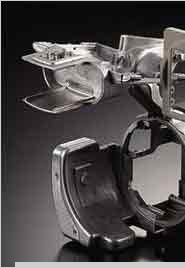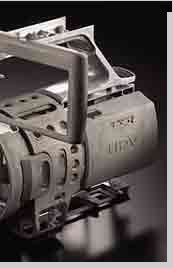Magnesium is an abundantly found metal, silvery white in appearance, fairly strong and light in weight. The metal is protected by a thin layer of oxide which is hard to remove and it tarnishes slightly when exposed to air.


Magnesium alloys find applications in various industries as they meet the requirements for lightweight materials to operate under increasingly demanding conditions. These metal alloys have always been demanded by designers due to their low density, only two thirds that of aluminum. This has been a significant factor in the widespread use of casted and wrought magnesium alloy.
There have been quite a few developments in the recent years to improve the performance of these alloys used in different casting processes. Improvements in mechanical properties has made these alloys more in demand for specialty application areas like aerospace. Magnesium Alloy Designation System
A standard system of alloy and temper designations, as given by the American Society for Testing and Materials (ASTM B 275) is explained in the following table:
- For the convenience of buyers we explain the designation system with the help of an example, considering the magnesium alloy AZ81A-T4.
- The first part of the designation, AZ, indicates that aluminum and zinc are the two principal alloying elements.
- The second part of the designation, 81, indicates the rounded-off percentages of aluminum and zinc (8 and 1, respectively).
- The third part, A, indicates that it is the fifth alloy standardized with 8% Al and 1% Zn as the principal alloying additions.
- The fourth part, T4, indicates that the alloy is solution heat-treated.
|
Applications of Magnesium Alloy
Magnesium and its alloys are widely used in diverse industrial applications. These alloys are used based on the individual properties. Some of the areas where magnesium is used are:
- Agriculture
- Industrial chemicals
- Industrial furnaces
- Construction
- Beverage cans
- Electronic devices
- Aerospace
Pure magnesium metal and its alloys are highly flammable in molten form, either as a powder, or in ribbon form. Molten magnesium also reacts violently with water. Magnesium powder is an explosive hazard. It is therefore advised that one should wear safety glasses while working with magnesium. The bright white light emitted during the burning of the metal can damage the eyes. Water should never be used for extinguishing magnesium fire, as it can actually feed the fire.
How to put out Magnesium fire?It is safe to use a Class D dry chemical fire extinguisher, else the fire should be covered with sand or magnesium foundry flux. Another easy way to put out small magnesium fire is to place a polyethene bag filled with dry sand on top of the fire. The heat of the fire will melt the bag and the sand will flow out onto the fire.
